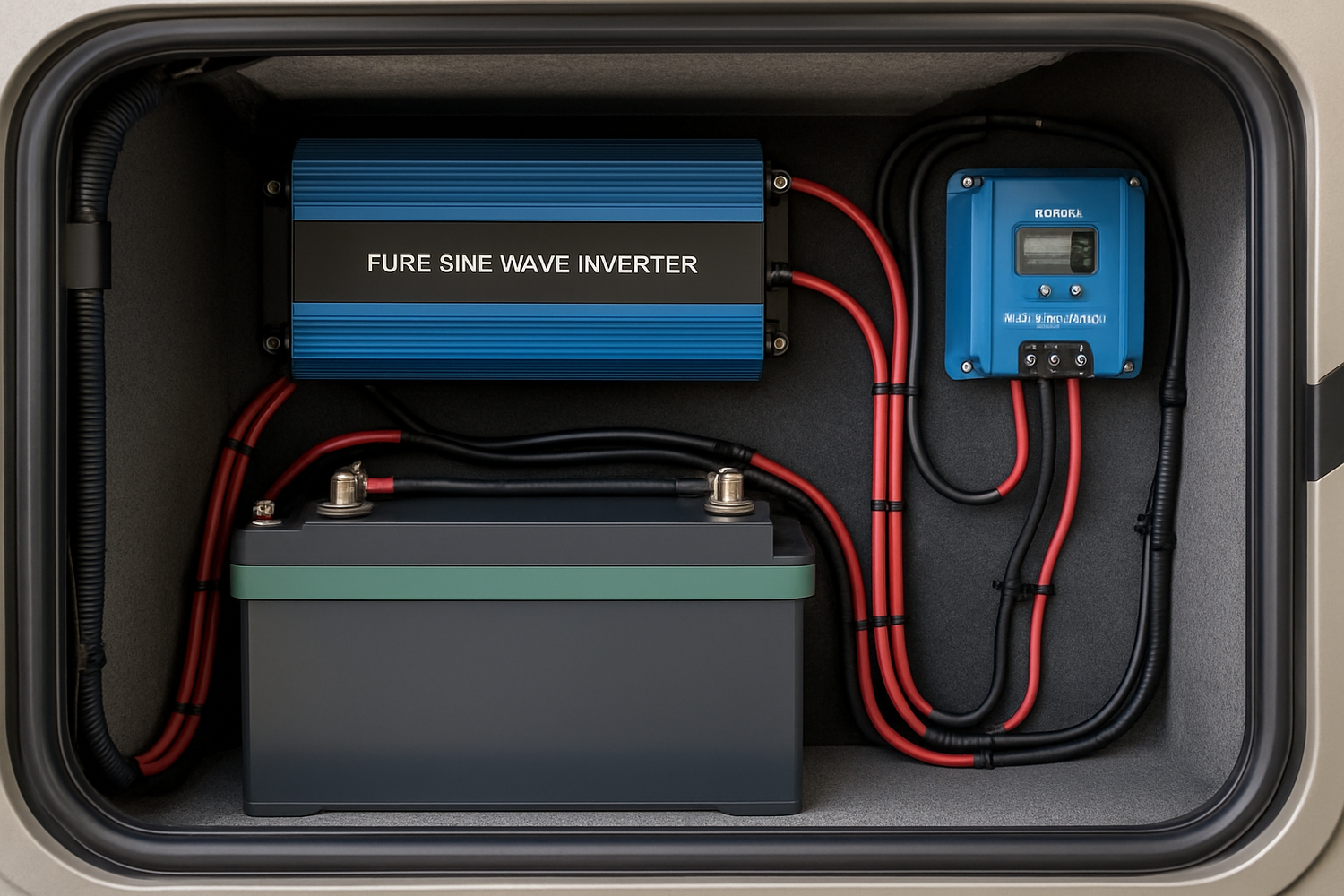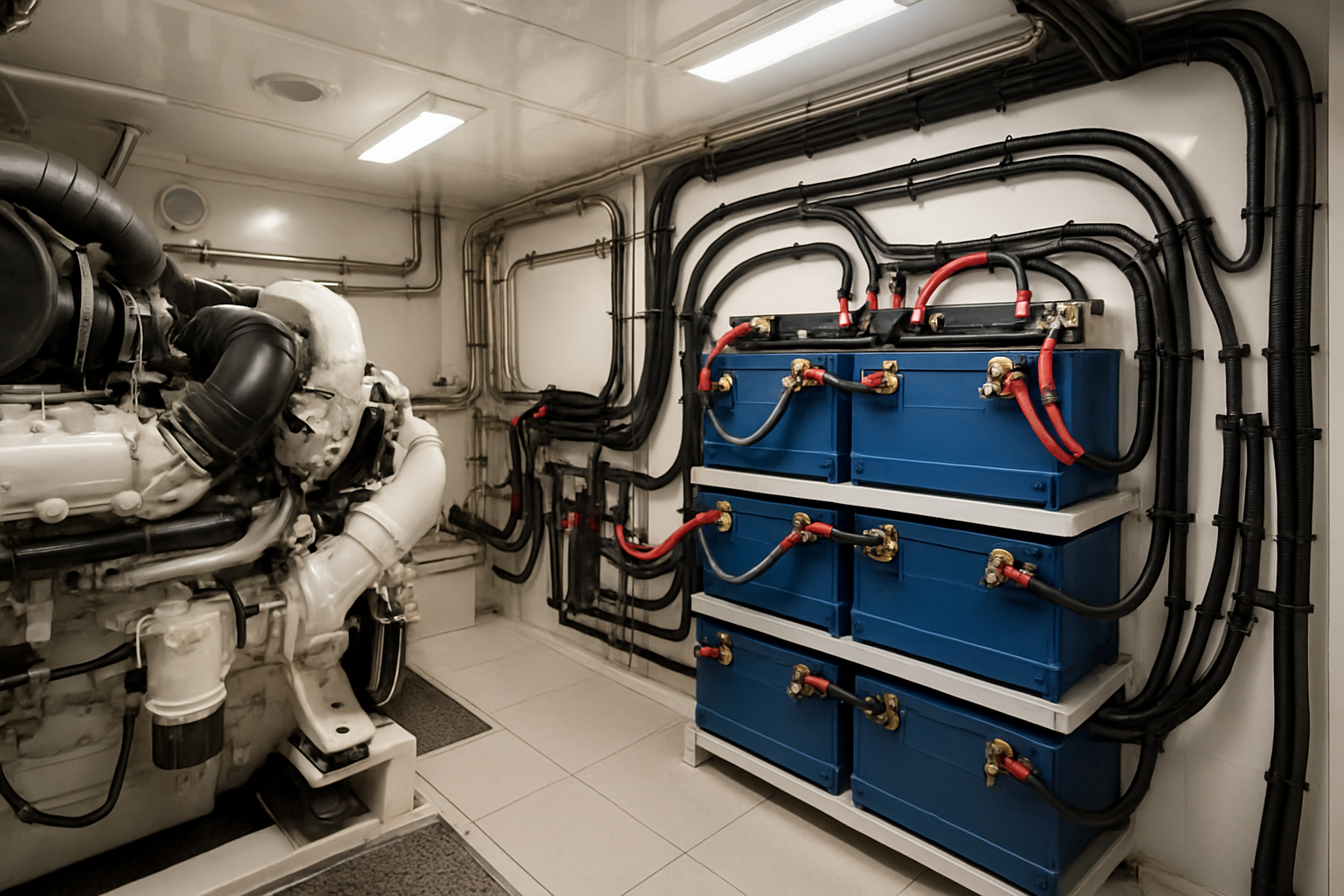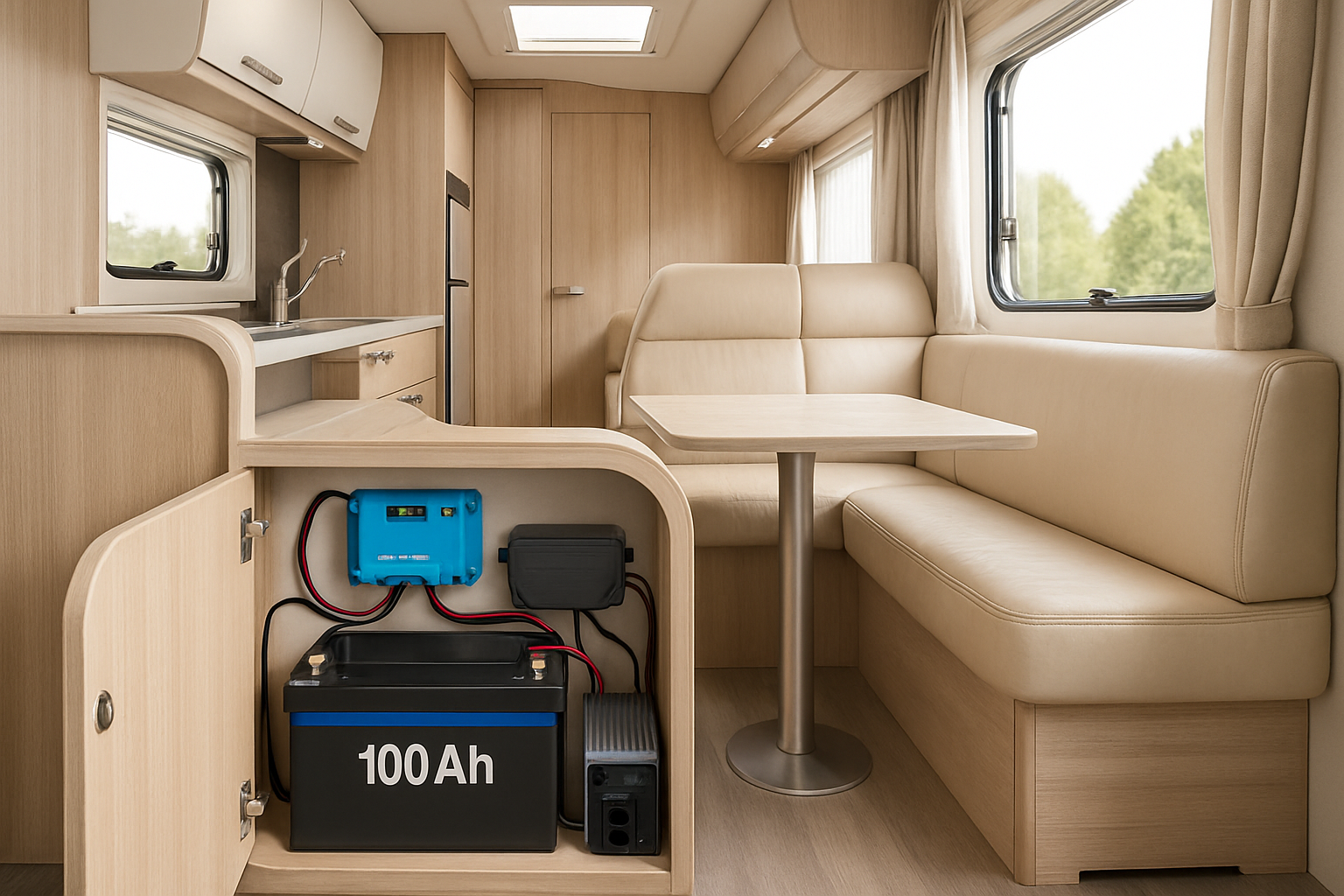Equipping your recreational vehicle with a solar energy storage system is a powerful step toward achieving true energy independence on the road. It allows you to explore remote locations without relying on noisy generators or expensive campground hookups. However, the path to a reliable RV solar setup is filled with potential missteps that can lead to wasted money, poor performance, and frustration. By avoiding a few common errors, you can build a system that is efficient, safe, and perfectly suited to your travel style.
Mistake 1: Undersizing or Oversizing Your System
The most common error in an RV solar setup is failing to correctly match the system's capacity to your actual energy needs. This mistake can be costly in either direction, leading to an underperforming system or an overbuilt one that costs too much.
Calculating Your Real Energy Needs
Before purchasing any components, you must perform a detailed energy audit. This involves listing every electrical appliance and device you plan to use, its power consumption in watts, and the estimated number of hours you'll use it each day. Summing these values gives you a total daily energy consumption in watt-hours (Wh). This figure is the foundation for sizing your solar panels, battery bank, and inverter correctly.
| Appliance | Power (Watts) | Daily Use (Hours) | Daily Energy (Watt-Hours) |
|---|---|---|---|
| Refrigerator (12V DC) | 50 W | 8 hours (cycling) | 400 Wh |
| LED Lights | 15 W | 4 hours | 60 Wh |
| Water Pump | 60 W | 0.5 hours | 30 Wh |
| Laptop Charging | 65 W | 2 hours | 130 Wh |
| Phone Charging (x2) | 10 W | 2 hours | 40 Wh |
| Total | 660 Wh |
The Consequences of Mismatching
An undersized system will consistently fail to meet your energy demands, leaving you with dead batteries when you need power most. This can also lead to chronically undercharging your batteries, which significantly shortens their lifespan. Conversely, an oversized system means you have spent money on capacity you will never use. The extra solar panels and batteries add unnecessary weight to your RV, which can impact fuel efficiency and handling.
Mistake 2: Choosing the Wrong Battery Technology
The battery bank is the heart of your solar energy storage system. Selecting the wrong type can limit your system's performance and lead to premature replacement costs. The choice often comes down to traditional lead-acid batteries versus modern lithium-ion technologies.
Lead-Acid vs. Lithium Iron Phosphate (LiFePO4)
While lead-acid batteries have a lower upfront cost, they come with significant drawbacks. They are heavy, require regular maintenance, and should only be discharged to about 50% of their capacity to avoid damage. In contrast, a lithium iron phosphate battery (LiFePO4) offers a much longer lifespan, is significantly lighter, and requires no maintenance. A 100 ah lithium battery can be safely discharged to 80-90% of its capacity, meaning you get far more usable energy from a smaller, lighter package. Though the initial investment is higher, the superior performance and longevity of a deep cycle lithium battery make it a more cost-effective solution over time.
Ignoring the Battery Management System (BMS)
A quality lithium battery pack will always include an integrated Battery Management System (BMS). This electronic system is crucial for safety and performance. It protects the battery from overcharging, over-discharging, extreme temperatures, and short circuits, ensuring the cells remain balanced and the battery operates efficiently for thousands of cycles.
Mistake 3: Neglecting Component Compatibility
A solar energy storage system is more than just panels and batteries; it's an interconnected ecosystem. Every component—from the charge controller to the inverter and wiring—must be correctly sized and compatible to ensure safety and efficiency.
The Critical Role of the Solar Charge Controller
The solar charge controller regulates the power flowing from your solar panels to your batteries, preventing overcharging. There are two main types: Pulse Width Modulation (PWM) and Maximum Power Point Tracking (MPPT). While PWM controllers are cheaper, MPPT controllers are significantly more efficient, often yielding up to 30% more power from the same solar array, especially in variable light or cold conditions. For most RV solar setups, an MPPT controller is the superior choice for maximizing your energy harvest.
Matching Your Inverter to Your Load
An inverter converts the DC power from your batteries into AC power for household appliances. It's essential to choose a pure sine wave inverter, which produces clean, stable electricity identical to grid power. This is necessary for running sensitive electronics like laptops, microwaves, and modern TVs without risk of damage. Your inverter must also be sized to handle the maximum combined wattage of all AC appliances you might run simultaneously.
Wiring and Fusing: The Unseen Protectors
Using undersized wires is a dangerous mistake that can lead to significant voltage drop, poor performance, and even fire hazards. Wires must be sized based on the amperage they will carry and their length. Furthermore, every positive wire connected to the battery bank must be protected with an appropriately sized fuse or circuit breaker. This is a non-negotiable safety measure that protects your components and your vehicle from short circuits.
Mistake 4: Improper Solar Panel Installation
Where and how you install your solar panels directly impacts their energy production. Even the best panels will underperform if installed incorrectly.
Panel Placement and Shading
Solar panels need direct, unobstructed sunlight to function effectively. Even a small amount of shade from a roof vent, air conditioner, or tree branch can dramatically reduce the output of an entire panel. When planning your layout, prioritize locations with maximum sun exposure throughout the day. Regular cleaning of your panels to remove dust and grime is also essential for maintaining peak performance.
Series vs. Parallel Wiring
How you wire multiple solar panels together matters. Wiring panels in series increases voltage, while parallel wiring increases amperage. For RVs, a parallel configuration is often advantageous. As highlighted in research from the U.S. Department of Energy, parallel wiring allows each panel to operate independently, so if one panel is partially shaded, the others can continue producing power at their full potential. This is a key finding from the EERE Success Story—Small Wonder: New Converter and Wiring Setup Can Improve Photovoltaic Module Performance.
Mistake 5: Overlooking System Monitoring
You cannot effectively manage what you cannot measure. A proper monitoring system is essential for understanding your power usage and the health of your battery bank.
The Importance of a Battery Monitor
For a lithium ion solar battery, voltage is not an accurate indicator of its state of charge. The only reliable way to know how much capacity is remaining is with a shunt-based battery monitor. This device precisely tracks the energy flowing in and out of your battery, giving you a clear 'fuel gauge' so you can manage your consumption and know exactly when you need to recharge.
Mistake 6: Ignoring Scalability and Future Needs
Your energy needs may change over time. A common oversight is designing a system with no room for expansion, forcing a costly overhaul down the road.
Planning for Growth
When selecting your initial components, consider your future needs. Choosing a solar charge controller and inverter that can handle more capacity than you currently require makes it much easier and more affordable to add more solar panels or batteries later. This foresight ensures your home battery storage system on wheels can grow with you.
Mistake 7: Relying on Inaccurate Information
The internet is filled with conflicting advice on RV solar. Relying on generic advice or 'one-size-fits-all' kits can lead to a system that doesn't meet your needs.
Seeking Reliable Sources
Building a robust system requires careful planning based on solid data. Understanding the key performance metrics of your components is fundamental. For a deeper look at what defines battery performance, a resource like the ultimate reference for solar storage performance provides a detailed breakdown of what to expect from your investment. Furthermore, insights from organizations like the International Energy Agency emphasize that a diversified, system-friendly approach to solar deployment provides the most value, a principle that applies to mobile systems as well. This is a key takeaway from their Next Generation Wind and Solar Power report.
Final Thoughts on a Successful Setup
Building a reliable RV solar energy storage system is an achievable goal that unlocks unparalleled freedom. Success hinges on diligent planning, starting with a thorough energy audit. By choosing high-quality, compatible components, paying close attention to installation details, and avoiding these seven common mistakes, you will create a dependable power solution that serves your adventures for years to come.
Frequently Asked Questions
How many solar panels do I need for my RV?
The number of solar panels you need depends entirely on your daily energy consumption and the available sunlight. A good rule of thumb is that a 100-watt solar panel will generate about 30 amp-hours (or 350-400 watt-hours) per day in good conditions. Calculate your daily watt-hour needs from your energy audit and divide by this number to get a starting estimate.
Is a lithium ion solar battery worth the extra cost?
For most RVers, the answer is yes. While the upfront cost is higher than lead-acid batteries, LiFePO4 batteries offer a much longer lifespan (up to 10 times more charge cycles), are about half the weight, provide more usable energy, and are maintenance-free. These benefits make them a superior long-term investment for a reliable off-grid power system.
Can I install an RV solar system myself?
A DIY installation is possible for those with strong electrical knowledge and confidence working with wiring. However, safety must be the top priority. The system involves high currents that can be dangerous if mishandled. If you are not completely comfortable with sizing wires, installing fuses, and making secure connections, professional installation is the recommended and safer choice.





Leave a comment
All comments are moderated before being published.
This site is protected by hCaptcha and the hCaptcha Privacy Policy and Terms of Service apply.